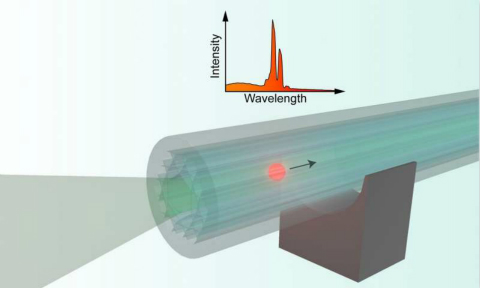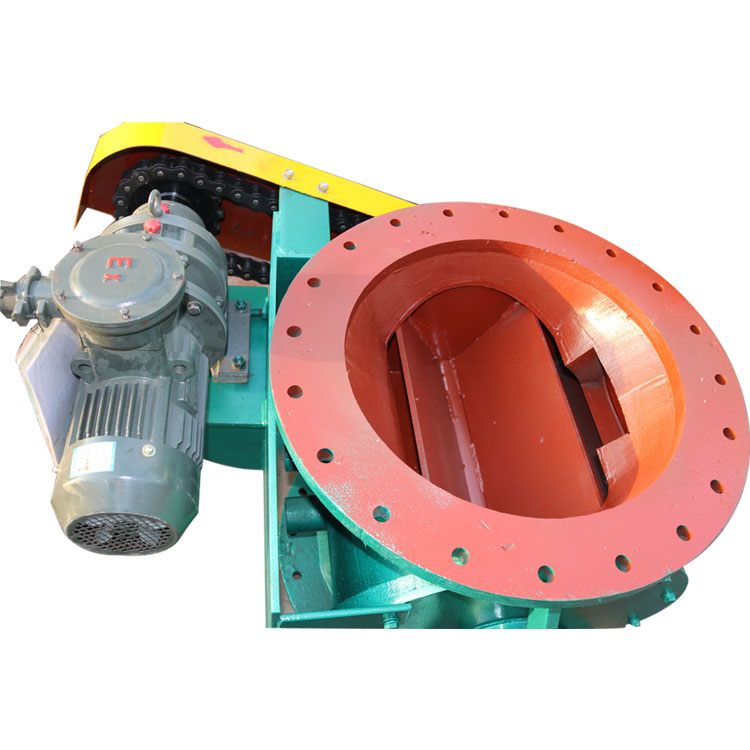China Instrument Network Instrument R&D On March 20, 2018, according to the American Optical Society, researchers for the first time optically captured and excited a particle-based centimeter-level laser inside an optical fiber. The new high-speed propagating microlaser can provide highly sensitive temperature measurements along the length of the fiber and can provide a novel way to accurately transmit light to distant and difficult-to-reach locations.

"This high-speed micro-laser has great potential for transmitting light in the body," said Richard Zeltner of the Marx Planck Institute for Optical Science in Germany. "By inserting the fiber into the skin, the microlaser can provide appropriate wavelengths and accurate positioning of light on the photoactive drug. This concept can also be applied to optofluidic chip lab devices, providing a variety of bioanalytical techniques or on-chip temperature measurement. High spatial resolution light sources." In The Optical Society (OSA) Optical Journal, researchers led by Philip St. J. Russell reported that high-speed micro lasers can be position-sensitive with millimeter spatial resolution Temperature sensing measurement. This example demonstrates the practicality of distributed high-speed micro lasers for distributed sensing, as well as real-time, continuous measurements along the fiber's direction.
High-speed transmission microlasers are based on a whispering gallery mode resonator, which is a small particle that limits and enhances certain wavelengths of light. The name comes from the phenomenon that light waves propagate along the curved inner surface of these particles, just as sound waves travel through the whispering walls of Paul's Cathedral, allowing the other side of the gallery to clearly hear the whisper.
“This is the first time a distributed sensing demonstration of a whispering gallery mode resonator has been used,†Zeltner said. “This unique sensing approach opens up many new possibilities for distributed measurement and long-range physical performance evaluation with high spatial resolution. For example, it is useful for temperature sensing in harsh environments."
Making high-speed transmission lasers
A key part of the realization of high-speed transmission micro lasers is a special type of optical fiber, called an air-core photonic crystal fiber. As the name implies, unlike traditional glass solid glass, the core portion of this fiber is empty. The hollow core is covered by a glass microstructure that confines light within the fiber.
“For a long time, our research team has been developing the necessary technology for light trapping particles in hollow photonic crystal fibers,†says Shangran Xie, member of the R&D team. "In this new job, we can apply this technology not only to capture a particle, but also to make it a laser capable of long-distance detection in optical fiber."
A whispering gallery mode particle is transported along the hollow core fiber, and the fiber-embedded metal V-groove performs the heating function. Initially, only a limited laser beam was introduced into the fiber from the left end of the fiber. About 37 seconds later, the second constrained laser beam was introduced from the right end of the fiber so that the particles stopped transmitting and were trapped in the center of the V-shaped groove.
In order to achieve high-speed transmission of micro-lasers, the researchers injected the laser into a water-filled hollow core to capture the particles optically. Like the materials used to make conventional lasers, the microparticles also contain a gain medium. The researchers used a second laser to excite this gain medium, causing particles to emit light or lasing. The position of the particles in the fiber is controlled by capturing the optical force generated by the laser or by the internal water flow in the core.
Accurate temperature sensing
To test the new system's ability to sense temperature changes, the researchers advanced the laser particles along two areas that were heated to 22 degrees Celsius above room temperature. By measuring the shift in wavelength of the laser light emitted from the microparticles as they pass through the fiber, changes in temperature can be accurately detected. The temperature change detected by the sensor is less than 3 degrees Celsius and provides a spatial resolution of a few millimeters.
"The spatial resolution of this distributed sensor is ultimately limited by the size of the particles," Zeltner said. "This means that we can achieve a spatial resolution as small as a few micrometers over a long measurement range, which is a huge advantage for our system compared to other types of distributed temperature sensors."
The researchers used laser Doppler velocimetry to determine that particles were moving at a speed of 250 microns per second during the experiment. They said that the use of fiber filled with air instead of water can increase the speed of advancement to centimeters per second or even meters.
Although the microparticles used in the experiment caused photobleaching to lose excitation after about one minute, the researchers stated that particles with different gain materials can solve this problem. They are also exploring whether multiple microlasers can be manipulated inside the fiber at the same time and are improving the particle position detection scheme.
"As the commercialization of hollow photonic crystal fibers has accelerated, all the technologies needed for this system to become a practical sensor are available," said Zeltner.
(Original title: Researchers have developed miniature lasers that transmit at high speed in hollow core fibers)

The unloader is divided into three types: normal type, pressure type, and high temperature type. The unloader can be driven at a constant speed, continuously discharging material at a controlled rate, or with variable speed drive, the unloader is used as a feeder. Unloader general type: It can be used on the normal materials below 150 degrees and normal temperature, and can continuously and uniformly feed material into the feeding pipe, and in the system and separation.The dust collection department can also serve as a unloader. Unloader pressure type: it uses a closed rotor, can be widely used in the suction type, pressure feed air conveying system and negative pressure conveying equipment, rotary discharge.The device can ensure that the pressure of the air flow inside the delivery pipe does not leak, and it can safely transport and collect the materials. Therefore, in this respect, it is called a lock-in gasifier, which not only can withstand pressure, while having common features.
Rotary Valve
Feed Valve,Rotating Valve,Rotary Feeder Valve,Rotary Control Valve
Botou Ever Lucky Environmental Protection Machinery Co., LTD , https://www.dustcontrolling.com

